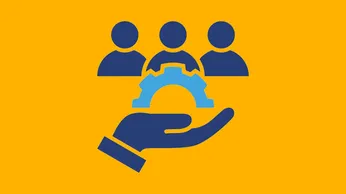Rethinking Customer Loyalty Through Market Research Insights
Loyalty market research goes beyond points and perks to uncover what really drives customer loyalty. Learn how to use data-driven insights to personalize experiences, identify friction, and build emotionally resonant programs that retain customers longer.
On this page
Customer loyalty isn't what it used to be. Perks and points can only go so far; today’s buyers want to feel seen, understood, and valued. With every click, scroll, and purchase, they’re sending signals about what they love, what frustrates them, and what drives them to competitors.
Tapping into these signals is no longer optional. It’s essential. Loyalty market research helps brands decode the why behind customer behavior. It’s how you move beyond gut feeling and start building loyalty strategies backed by real insights from behavior patterns to feedback and emotional cues.
In this blog, we’ll dive into what current research tells us about modern loyalty: what’s working, where brands are missing the mark, and how you can harness this data to increase retention, boost advocacy, and build lasting relationships.
Understanding consumer loyalty
Consumer loyalty is often seen as a straightforward concept, but within the context of market research, it carries a more precise definition: it refers to how likely a customer is to repeatedly engage with and purchase from a brand or business over time.
At its core, this loyalty is typically driven by positive experiences, whether through consistent product quality, satisfying customer service, or an overall smooth customer journey. However, loyalty isn’t formed through satisfaction alone. Emotional connection, trust, shared values, convenience, and even personalized engagement all contribute to shaping a loyal consumer base.
The challenge for brands is that these loyalty drivers vary widely across customer segments. No brand can meet every individual need—especially if they lack visibility into their customers’ frustrations, expectations, and shifting preferences.
That’s where loyalty market research becomes essential. By leveraging data and direct feedback, brands can gain the insights needed to understand what truly drives repeat behavior and identify areas where loyalty may be weakening.
Incorporating loyalty market research into strategy helps brands move beyond assumptions and build programs rooted in what customers actually value. This research can be gathered through various methods such as surveys, interviews, behavior analysis, and third-party market reports.
What the latest loyalty market research reveals
The 2024 EY Loyalty Market Study surveyed 1,581 consumers and 304 corporate loyalty professionals across sectors such as retail, tech, travel, and consumer goods. The intent? To compare what customers expect from loyalty programs versus how brands are currently delivering them.
This research was designed not just to surface surface-level preferences, but to dig into why buyers engage, stay, or walk away—and what companies can do about it.
The loyalty divide: Misalignment between brands and buyers
Here’s where the loyalty story takes a turn.
Despite corporate investments in content and cash-equivalent rewards, 89% of consumers still shop outside of their enrolled loyalty programs. Even more telling, only 42% of brands are investing in personalized rewards—despite widespread consumer demand.
This misalignment is costly.
Why do buyers go? Because many loyalty programs:
- Are difficult to navigate or redeem.
- Feel generic or transactional.
- Lack tailored incentives that align with a customer’s real interests and behaviors.
Loyalty market research makes one thing obvious: brands must evolve or risk becoming irrelevant.
What brands think keeps customers coming back
According to 2024 EY study, loyalty programs are primarily viewed as tools for:
- Improving brand relationships (46%)
- Increasing customer retention (44%)
- Acquiring new customers (36%)
To deliver on these goals, most brands offer classic benefits like discounts (70%), points (64%), and access to exclusive content (57%). Many are also beginning to invest in experiential rewards and special sales to deepen customer engagement.
However, fewer than half of these programs offer personalized recommendations (42%) or customized touchpoints (36%), which—spoiler alert—are exactly what consumers crave.
Why buyers really stay: Consumer loyalty drivers
From the consumer’s perspective, loyalty goes well beyond price discounts.
- 67% report a more positive brand opinion due to loyalty programs.
- 58% say these programs lead them to spend more with a brand.
- Personalization plays a key role: 73% want to select their own rewards, and 70% consider personalized experiences "moderately to very important".
Generational differences matter too. For example:
- Gen Z (18–24) prefers sweepstakes, exclusive content, and mobile-first enrollment.
- Millennials and Gen X (25–44) are "loyalty enthusiasts" who value tiered benefits, data-driven personalization, and exclusive access.
- Baby Boomers (55+) prioritize value, simplicity, and enhanced customer service.
The message is clear: personalization and relevance drive loyalty, not just rewards.
How loyalty market research keeps you ahead of the curve
If you want to retain modern customers, you need to go beyond guesswork and assumptions. Loyalty market research provides the clarity required to build programs that resonate across demographics, channels, and moments.
It empowers marketers to stop reacting and start anticipating, ensuring your loyalty strategy remains relevant, agile, and effective—even as consumer expectations evolve.
Here’s how loyalty market research helps future-proof your programs:
1. Reveals generational preferences
Customer loyalty is not universal—it’s generational.
Younger customers, like Gen Z, prefer mobile-first experiences, gamified rewards, and social integration. Millennials lean into tiered memberships and personalized perks. Meanwhile, Gen X and Boomers value simplicity, tangible discounts, and excellent customer service.
Loyalty market research pinpoints these nuances so you can tailor programs to resonate with each group, instead of applying a one-size-fits-all model. Segment-specific strategies result in higher engagement, better satisfaction, and stronger retention.
2. Identifies friction points across the loyalty journey
From signing up to redeeming a reward, every touchpoint matters.
Many loyalty programs lose members not because of poor value, but because of unclear sign-up flows, hard-to-reach rewards, or lack of reminders. Research helps uncover where and why customers drop off, guiding you to streamline journeys, simplify redemptions, and remove hidden blockers.
These friction points, once identified through data and feedback, become opportunities for improvement that directly boost satisfaction and reduce churn.
3. Informs personalization tactics with real behavioral data
Generic messaging and blanket discounts no longer work.
Loyalty market research provides real-world insights into what customers respond to—when, where, and how. It allows you to segment based on behavior (not just demographics) and deliver personalized recommendations, tailored offers, and reward formats aligned with past actions and expressed preferences.
This shift from mass marketing to precision personalization is what differentiates forgettable programs from memorable ones.
Platforms like Loyalife help transform these research insights into action. From building segmented reward journeys to delivering personalized experiences across channels, Loyalife empowers brands to adapt loyalty programs in real time based on real customer behavior and feedback.
4. Guides omnichannel optimization
Customers expect seamless experiences across all channels—web, mobile app, email, in-store, and more.
Research helps you identify which channels your customers prefer, how they switch between them, and where to double down. For instance, Gen Z may prefer enrolling via a mobile app, while older customers might respond better to email prompts or in-store POS reminders.
By using loyalty market research to map engagement behavior across touchpoints, brands can design cohesive omnichannel strategies that meet customers where they are—and where they want to be.
5. Defines emotional KPIs that matter
Beyond transactional metrics, what really defines loyalty?
While many programs track spend or point redemption, research reveals deeper, more powerful indicators: emotional connection to the brand, trust, and perceived recognition. These emotional KPIs are harder to measure but are more predictive of long-term loyalty.
Market research helps you quantify these softer metrics—like brand affinity, customer sentiment, and willingness to advocate—and use them to guide experience design and program evolution.
A step-by-step guide to loyalty market research
Understanding what truly drives customer loyalty requires more than tracking purchases or reward redemptions. It takes deliberate, structured research to uncover the motivations, expectations, and behaviors behind customer decisions.
Loyalty market research gives you the data to design programs that connect on a deeper level by addressing emotional, functional, and contextual needs.
Here’s how to conduct loyalty market research that delivers meaningful insights:
1. Define your objectives
Start by clarifying what you want to learn. Are you trying to understand why customers abandon your loyalty program? Do you want to evaluate the emotional impact of your rewards? Or are you exploring opportunities to personalize experiences by customer segment?
Clear objectives help determine the right methods, questions, and audience for your research.
2. Segment your audience
Loyalty is not a one-size-fits-all concept. Segment your customer base based on factors such as:
- Age or generation
- Purchase frequency
- Engagement level (such as active or dormant members)
- Loyalty tier or status
This ensures your insights reflect the unique needs and motivations of different customer groups.
3. Choose the right research methods
Use a mix of quantitative and qualitative approaches to get a complete picture of customer behavior and sentiment:
- Surveys: Ideal for capturing broad trends and patterns across customer segments
- In-depth interviews: Useful for exploring emotional drivers, frustrations, and expectations
- Behavioral analytics: Helps track reward redemptions, drop-offs, channel usage, and engagement
- Voice-of-customer tools: Social listening, reviews, and direct feedback can highlight unmet needs and recurring pain points
Combining these methods allows you to validate assumptions and identify details that may not be visible through numbers alone.
4. Ask the right questions
Effective loyalty research questions go beyond surface-level satisfaction. They should explore:
- Why customers joined the program
- How they perceive its value
- What rewards or experiences matter most
- What keeps them engaged or what causes them to leave
- How they prefer to interact with the program (channels, frequency, tone)
Include open-ended questions to capture deeper, unexpected insights.
5. Analyze and translate the findings
Data alone does not drive change. Insight does. Once your research is complete:
- Look for patterns across different customer segments
- Identify common points of friction or delight
- Map emotional motivators to loyalty behaviors
- Prioritize the changes that will have the greatest impact
This process helps inform decisions around program structure, personalization, communication, and performance tracking.
6. Turn insights into action
Use your research findings to refine and evolve your loyalty strategy. This may involve simplifying the enrollment process, redesigning your rewards catalog, improving communication flows, or creating new tiers that reflect actual user preferences.
The key is to ensure your loyalty experience is shaped by what customers actually want, not just what you think they want. When insights drive design, engagement and retention follow.
Practical takeaways to improve your loyalty strategy
Turning loyalty market research into action requires more than insights—it demands thoughtful execution.
Below are key steps, backed by research findings, to help you design loyalty programs that not only attract members but keep them engaged over time.
1. Understand your audience deeply
To build meaningful loyalty, you must first understand who you're trying to engage.
- Segment your audience based on demographics such as age, but also behavior, lifestyle, frequency of interaction, and purchase history.
- Use this segmentation to tailor reward types, communication frequency, and channel preference. A 55-year-old shopper loyal to in-store purchases will need a different strategy than a 22-year-old who shops and redeems exclusively through mobile.
This approach ensures your program resonates with each group’s unique motivations and expectations.
2.Design for digital, especially mobile
Customers today expect seamless digital interactions—especially on mobile.
- Make enrollment intuitive and fast, with minimal friction. Forms should be short, and signup should integrate easily with existing customer journeys like checkout or account creation.
- Promote loyalty directly within mobile apps, QR codes, digital wallets, or NFC-enabled POS experiences.
- Ensure that your loyalty offerings are highly visible in both app and web environments, as younger demographics are more likely to engage through mobile-first channels.
Failing to optimize for digital—not just online, but truly mobile—means losing relevance with key audience segments.
If you’re looking for a unified solution to design, deliver, and optimize personalized loyalty experiences, Loyalife offers the tools to do exactly that.
With features built for behavioral segmentation, real-time engagement, and customizable reward ecosystems, Loyalife ensures your program remains relevant and emotionally engaging across every customer touchpoint.
3. Prioritize personalization
A personalized experience makes customers feel seen and valued.
- Allow members to choose their own rewards from a menu of options that align with their interests or purchase history. This builds autonomy and perceived value.
- Leverage behavioral data to deliver custom product recommendations, personalized offers, and tailored communication based on what customers have browsed, bought, or responded to in the past.
Personalization turns a loyalty program from a static system into a dynamic, adaptive journey that grows more relevant over time.
4. Rethink performance metrics
Traditional KPIs like sales lift and point redemption are no longer enough.
- Incorporate emotional and experiential metrics such as customer satisfaction, perceived reward value, ease of use, and brand affinity.
- Monitor redemption rates, reward usage patterns, and program drop-offs to identify what’s working and where improvements are needed.
- Understand that success isn’t just transactional—it’s emotional. Measuring loyalty should include both hard numbers and soft signals.
By expanding your KPI framework, you’ll get a more holistic view of the program’s actual impact on loyalty.
5. Monitor and adapt continuously
Loyalty programs should evolve alongside customer expectations and market trends.
- Conduct regular voice-of-customer (VoC) surveys, usability tests, and feedback loops to understand member sentiment and gather ideas for improvement.
- Use A/B testing and behavioral analytics to refine offers, optimize messaging, and adjust reward structures.
- Stay flexible—successful programs are not static but are continuously optimized through data-driven experimentation.
This ensures your loyalty strategy stays aligned with what your customers actually want—not what you assume they do.
Loyalty KPIs that actually reflect retention
Many companies rely on familiar KPIs such as customer retention (59%), sales growth (56%), and customer lifetime value (52%) to measure loyalty program success. While useful, these metrics overlook deeper signals of true loyalty such as emotional connection and perceived value.
Only 35% of companies feel confident in measuring the full impact of their programs, largely because traditional KPIs miss why customers stay or why they leave. A customer may continue transacting out of convenience, not loyalty. This is a risky assumption in a highly competitive market.
To truly gauge effectiveness, brands must adopt a more holistic approach by incorporating metrics that reflect engagement, satisfaction, and emotional alignment.
Here are four essential metrics brands should integrate into their measurement frameworks:
1. Program utilization & redemption rates
These tell you how actively members are engaging with the program—not just signing up and disappearing. Low redemption rates could indicate a lack of perceived value or complexity in the reward process. High utilization often correlates with deeper emotional engagement and satisfaction.
2. Net promoter score (NPS) by loyalty tier or cohort
NPS is a trusted measure of advocacy and customer satisfaction. When segmented by loyalty tier or demographic group, it becomes a powerful lens into how your program is resonating across customer segments.
If your top-tier members aren’t your biggest promoters, something may be broken in your value proposition.
3. Personalized reward engagement
Track how often personalized rewards are selected and redeemed. This can reveal how well your segmentation and data activation strategies are working. If consumers aren’t engaging with tailored offers, your personalization engine may need recalibration.
The more relevant the rewards, the stickier your program becomes.
4. Voice-of-customer (VoC) feedback
Collect qualitative data via surveys, reviews, social listening, and customer interviews. VoC insights offer direct signals about how customers feel about the program—its ease of use, emotional value, fairness, and uniqueness.
5. Align KPIs to loyalty goals
Ultimately, loyalty measurement should reflect the goals of your program. If your objective is emotional connection and brand advocacy, then your metrics must go beyond purchases. Track how customers feel about the brand, how often they interact with your loyalty touchpoints, and how deeply they engage with the experience—not just how much they spend.
As customer loyalty market research consistently shows, emotional loyalty is the new competitive edge. To win, brands must not only act on what customers do—but deeply understand why they do it.
Loyalty built on insight, not assumption
Customer loyalty today is earned through relevance, emotional connection, and effortless experiences not just rewards. As loyalty expectations evolve, so must your strategy. Loyalty market research has made one thing clear: brands that understand the why behind behavior can anticipate needs, personalize meaningfully, and retain customers more effectively.
But insights alone aren’t enough. Turning research into action requires the right technology, tools, and strategy.
Loyalty insights are only as powerful as your ability to act on them. Loyalife helps you bridge that gap with tools designed to bring your strategy to life:
1. Turn research into real-time loyalty journeys
Translate market research into dynamic loyalty experiences using real-time segmentation, behavioral triggers, and contextual engagement. Loyalife helps you design programs that adapt to how customers actually behave—not how you assume they will.
2. Personalize across every touchpoint
Deliver consistent and personalized experiences across mobile, web, in-store, and email channels. Loyalife ensures that your loyalty strategy aligns with individual customer preferences, creating seamless omnichannel engagement.
3. Measure what really drives loyalty
Track metrics that go beyond transactions. With Loyalife, you can monitor emotional engagement, reward relevance, and loyalty sentiment to get a complete view of your program’s impact on long-term retention.
4. Keep evolving with customer expectations
Continuously improve your loyalty program with built-in feedback loops, flexible program design, and modular reward ecosystems. Loyalife empowers you to respond quickly to changing customer needs and market dynamics.
Explore how Loyalife can help you personalize at scale, increase engagement, and turn one-time buyers into lifelong brand advocates. Talk to our team today!















